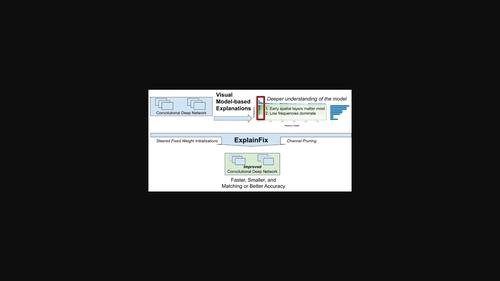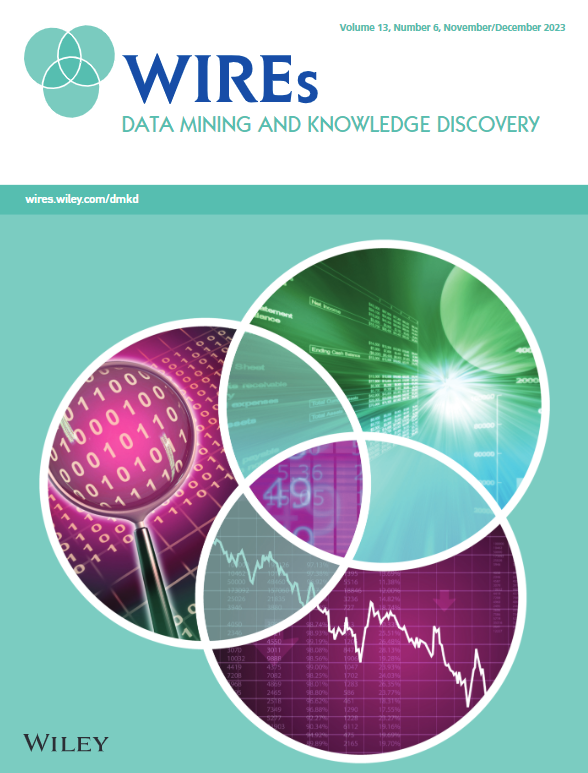ExplainFix: Explainable spatially fixed deep networks
IF 11.7
2区 计算机科学
Q1 COMPUTER SCIENCE, ARTIFICIAL INTELLIGENCE
Wiley Interdisciplinary Reviews-Data Mining and Knowledge Discovery
Pub Date : 2023-03-18
DOI:10.1002/widm.1483
引用次数: 1
Abstract
Is there an initialization for deep networks that requires no learning? ExplainFix adopts two design principles: the “fixed filters” principle that all spatial filter weights of convolutional neural networks can be fixed at initialization and never learned, and the “nimbleness” principle that only few network parameters suffice. We contribute (a) visual model‐based explanations, (b) speed and accuracy gains, and (c) novel tools for deep convolutional neural networks. ExplainFix gives key insights that spatially fixed networks should have a steered initialization, that spatial convolution layers tend to prioritize low frequencies, and that most network parameters are not necessary in spatially fixed models. ExplainFix models have up to ×100 fewer spatial filter kernels than fully learned models and matching or improved accuracy. Our extensive empirical analysis confirms that ExplainFix guarantees nimbler models (train up to 17% faster with channel pruning), matching or improved predictive performance (spanning 13 distinct baseline models, four architectures and two medical image datasets), improved robustness to larger learning rate, and robustness to varying model size. We are first to demonstrate that all spatial filters in state‐of‐the‐art convolutional deep networks can be fixed at initialization, not learned.

ExplainFix:可解释的空间固定深度网络
是否存在不需要学习的深度网络初始化?ExplainFix采用两种设计原则:一种是“固定滤波器”原则,即卷积神经网络的所有空间滤波器权重在初始化时都是固定的,无需学习;另一种是“灵活”原则,即仅需少量网络参数即可。我们贡献了(a)基于视觉模型的解释,(b)速度和准确性的提高,以及(c)深度卷积神经网络的新工具。ExplainFix给出了关键的见解,即空间固定的网络应该有一个定向初始化,空间卷积层倾向于优先考虑低频,并且大多数网络参数在空间固定模型中是不必要的。与完全学习的模型相比,ExplainFix模型的空间过滤核数最多可达×100,并且匹配或提高了精度。我们广泛的实证分析证实,ExplainFix保证了更灵活的模型(通过通道修剪将训练速度提高17%),匹配或改进的预测性能(跨越13个不同的基线模型,四种架构和两个医学图像数据集),提高了对更大学习率的鲁棒性,以及对不同模型大小的鲁棒性。我们首先证明了最先进的卷积深度网络中的所有空间滤波器都可以在初始化时固定,而不是学习。
本文章由计算机程序翻译,如有差异,请以英文原文为准。
求助全文
约1分钟内获得全文
求助全文
来源期刊

Wiley Interdisciplinary Reviews-Data Mining and Knowledge Discovery
COMPUTER SCIENCE, ARTIFICIAL INTELLIGENCE-COMPUTER SCIENCE, THEORY & METHODS
CiteScore
22.70
自引率
2.60%
发文量
39
审稿时长
>12 weeks
期刊介绍:
The goals of Wiley Interdisciplinary Reviews-Data Mining and Knowledge Discovery (WIREs DMKD) are multifaceted. Firstly, the journal aims to provide a comprehensive overview of the current state of data mining and knowledge discovery by featuring ongoing reviews authored by leading researchers. Secondly, it seeks to highlight the interdisciplinary nature of the field by presenting articles from diverse perspectives, covering various application areas such as technology, business, healthcare, education, government, society, and culture. Thirdly, WIREs DMKD endeavors to keep pace with the rapid advancements in data mining and knowledge discovery through regular content updates. Lastly, the journal strives to promote active engagement in the field by presenting its accomplishments and challenges in an accessible manner to a broad audience. The content of WIREs DMKD is intended to benefit upper-level undergraduate and postgraduate students, teaching and research professors in academic programs, as well as scientists and research managers in industry.
 求助内容:
求助内容: 应助结果提醒方式:
应助结果提醒方式:


